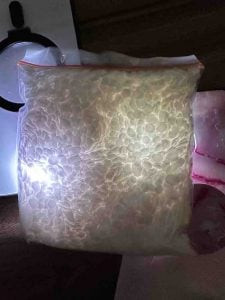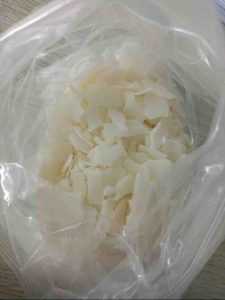
Polyethylene wax supplier from Turkey and UAE (Dubai)
- Home
- Polyethylene wax supplier from Turkey and UAE (Dubai)

What is polyethylene wax?
Basekim Polyethylene wax is a type of synthetic wax called PE wax derived from the polymerization of ethylene gas. It is commonly produced through the high-pressure polymerization of ethylene using specialize catalysts. The resulting PE wax has a wide range of applications due to its unique properties.
Properties of polyethylene wax
properties of Polyethylene wax is characterized by its low molecular weight and linear structure. It typically exists as a solid, white or light yellow-color material with a waxy texture. Some key properties of wax include:
Low melting point
Low melting Polyethylene wax has a relatively low melting point, which allows it to melt easily and provide lubrication at low temperatures.
Table of Contents
ToggleHigh hardness
It possesses a high degree of hardness, making it useful for applications that require abrasion resistance and durability.
Low viscosity
Low viscosity Polyethylene wax has a low viscosity, meaning it flows easily and provides excellent internal lubrication.
Chemical resistance
It exhibits good resistance to many chemicals, including acids, alkalis, and organic solvents.
Application and usage of PE wax
- Coatings and inks
Slip and anti-blocking agent
It is often employ as a slip agent in coatings and inks to reduce the coefficient of friction between surfaces. It helps in improving the smoothness and slipperiness of the coating or ink film, preventing sticking or blocking when surfaces come into contact. This property is particularly useful in applications such as paper coatings, flexible packaging, and graphic arts.
Lubricant and processing aid
Due to its low viscosity and excellent lubricating properties, polyethylene wax is using as a lubricant and processing aid in coatings and inks. It facilitates the flow of the formulation during processing, improves dispersion of pigments or fillers, and enhances the application properties of coatings and inks. It also helps reduce the energy required for mixing and dispersing the components.
Gloss and matting agent
It can be utilized as a gloss agent to enhance the shine and luster of coatings and inks. It forms a smooth, glossy film on the surface, providing an attractive finish. On the other hand, when use as a matting agent, it can reduce the gloss and create a matte or satin appearance in coatings or inks, depending on the particle size and concentration use.
Rheology modifier
In some coating and ink formulations, polyethylene wax acts as a rheology modifier. It helps control the viscosity and flow behavior of the system, improving its stability and handling characteristics. By adjusting the concentration of PE wax, the desire rheological properties, such as shear thinning or thixotropic behavior, can be achieve.
Water repellent and moisture barrier
It can be incorporated into coatings and inks to impart water repellency and moisture resistance. It forms a protective barrier on the surface, reducing the absorption of water or moisture and enhancing the durability and longevity of the coat material. This property is valuable in applications such as paper coatings, packaging materials, and outdoor signage.
- Plastics and rubber
Lubricant and processing aid
Usually acts as a lubricant and processing aid in plastic and rubber processing. It reduces friction between polymer chains and between the polymer and processing equipment, improving the flow properties and processability of the materials. This leads to easier extrusion, molding, and processing, as well as enhance surface finish of the final products.
Mold release agent
Our wax is commonly use as a mold release agent in plastic and rubber molding processes. It helps facilitate the release of the mold parts from the molds, preventing sticking and improving the efficiency of the manufacturing process. This is particularly useful in injection molding, where PE wax can be apply as a coating or added to the molding material to provide easy release of the finish parts.
Anti-blocking agent
In plastic films and sheets, polyethylene wax is employ as an anti-blocking agent. It reduces the tendency of the film surfaces to stick together, enabling easy unwinding, stacking, and handling of the films. This property is crucial in applications such as food packaging, where the films need to maintain their integrity and be easily separable.
Enhancing surface properties
Use to improve the surface properties of plastic and rubber products. It imparts a smooth, glossy finish to the surfaces, enhancing their appearance and feel. This is especially valuable in applications such as automotive interior components, flooring, and consumer goods, where a visually appealing and tactile surface is desired.
Impact modifier
In certain plastic formulations, PE wax can act as an impact modifier. It improves the impact resistance and toughness of the final plastic products, making them more resistant to cracking or breaking under mechanical stress. This property is particularly beneficial in applications such as automotive parts, pipes, and packaging materials.
Filler dispersion aid
Special usage as a filler dispersion aid in plastic and rubber compounds. It helps disperse and stabilize fillers, such as carbon black or mineral powders, within the polymer matrix, ensuring uniform distribution and improve mechanical properties of the final products.
- Hot melt adhesives

Thermal stability
Polyethylene wax has excellent thermal stability, allowing it to withstand the high temperatures involve in hot melt adhesive processing. It helps maintain the integrity of the adhesive during melting, blending, and application stages.
Viscosity control
Polyethylene wax acts as a viscosity modifier in hot melt adhesives. It helps control the flow properties and viscosity of the molten adhesive, ensuring optimal application characteristics. By adjusting the concentration of polyethylene wax, adhesive manufacturers can achieve the desire viscosity and rheological properties for specific applications.
Processability
Polyethylene wax improves the processability of hot melt adhesives. Its low viscosity and lubricating properties aid in the blending and mixing of adhesive components, promoting uniform dispersion of additives, fillers, and tackifiers. This leads to a more homogeneous adhesive formulation and improve process efficiency.
Open time and set time control
Polyethylene wax can influence the open time (the time available for adhesive application) and set time (the time it takes for the adhesive to solidify and develop bond strength) of hot melt adhesives. By adjusting the type and concentration of polyethylene wax, adhesive manufacturers can fine-tune these properties to meet specific application requirements.
Bond strength and adhesion
Polyethylene wax can enhance the bond strength and adhesion properties of hot melt adhesives. It promotes proper wetting and contact between the adhesive and substrate, improving adhesion performance. Additionally, polyethylene wax can contribute to the cohesive strength of the adhesive, ensuring reliable and durable bonds.
Blocking resistance
Polyethylene wax acts as an anti-blocking agent in hot melt adhesives, preventing them from sticking or blocking when store or transport. This property allows for easy handling and unwinding of adhesive-coated materials, ensuring efficient and hassle-free application.
- Textiles

Fiber lubrication
Polyethylene wax is use as a lubricant in textile fiber processing. It helps reduce friction between fibers during spinning, weaving, and knitting processes. By minimizing fiber-to-fiber friction, polyethylene wax improves the smoothness of yarn production, reduces fiber breakage, and enhances overall manufacturing efficiency.
Yarn and fabric lubrication
Polyethylene wax can be applied as a lubricant during the yarn winding and fabric weaving processes. It helps in the smooth movement of yarn or fabric through machinery, preventing tangling, snagging, or abrasion. This lubricating property of polyethylene wax enhances the quality and integrity of the final textile products.
Fabric softening and finishing
Polyethylene wax is use as a softening agent and finishing aid in textile processing. It imparts a soft and smooth feel to fabrics, improving their comfort and aesthetic appeal. Polyethylene wax can be applied as a coating or added to finishing formulations to achieve desire softness and enhance the drape of the fabric.
Anti-static properties
Polyethylene wax is employ as an anti-static agent in textiles to reduce static electricity build-up. It helps dissipate or prevent the accumulation of static charges, reducing issues like static cling and discomfort. Polyethylene wax-treated textiles exhibit reduce static electricity, making them more comfortable to wear and handle.
Water repellency and moisture management
Polyethylene wax can be used to impart water repellency or moisture management properties to textiles. By forming a hydrophobic barrier on the fabric surface, polyethylene wax helps repel water or moisture, keeping the fabric dry and comfortable. This is particularly useful in outdoor and performance textiles, where protection from rain, moisture, or sweat is desired.
Coating and laminating
Polyethylene wax is utilize in textile coating and laminating processes. It can be apply as a thin layer or incorporate into coating formulations to provide additional functionality to fabrics. Polyethylene wax coatings can enhance properties such as water resistance, abrasion resistance, or durability, depending on the specific requirements of the application.
The specific application methods and concentrations of polyethylene wax in textiles may vary depending on the desired effects, fabric type, and processing conditions. Manufacturers often tailor the formulation to meet specific performance and aesthetic requirements for different textile applications.
- Personal care products
Emollient
Polyethylene wax can serve as an emollient in certain personal care products, such as creams, lotions, and moisturizers. It helps to moisturize and soften the skin by forming a protective barrier that reduces water loss and improves skin hydration. PE wax can provide a smooth and silky feel to the skin, enhancing the sensory experience of the product.
Thickening agent
In some formulations, polyethylene wax can act as a thickening agent or viscosity modifier. It helps increase the viscosity and stability of personal care products, providing a desirable texture and consistency. PE wax can contribute to the overall body and thickness of products like creams, balms, or ointments.
Film-forming agent
Polyethylene wax can form a thin film on the skin’s surface, providing a protective layer that helps retain moisture and protects against external factors. This film-forming property is beneficial in lip balms, lipsticks, and other lip care products. It helps to keep the lips hydrated and prevents moisture loss.
Binding agent
PE wax can be used as a binding agent in certain cosmetic and personal care products. It helps ingredients adhere together and maintain their structural integrity. PE wax can contribute to the stability and durability of products like solid perfumes, stick deodorants, or solid foundations.
Opacifying agent
Polyethylene wax can act as an opacifying or thickening agent in certain personal care formulations, such as shampoos, conditioners, or body washes. It can help enhance the opacity and viscosity of these products, giving them a creamy and luxurious appearance.
It’s important to note that the use of polyethylene wax in personal care products is subject to regulations and guidelines set by regulatory authorities to ensure product safety and consumer protection. The specific applications and concentrations of PE wax may vary depending on the product type, desire properties, and formulation requirements.
Differences of Iran Trukey china and Dubai UAE polyethylene wax
Polyethylene wax is a type of synthetic wax derived from polyethylene polymers. While there may be some differences in the production and specifications of polyethylene wax in Iran, Turkey, China, and Dubai (UAE), it’s important to note that PE wax itself is a standardized product with consistent properties. However, regional factors such as raw material sources, manufacturing processes, and market preferences can influence certain aspects of its production and distribution.
The availability and quality of raw materials used in polyethylene wax production can vary between countries. Iran and UAE are oil-rich countries, and their PE wax production may heavily rely on petroleum-based feedstocks. Turkey and China, on the other hand, might have access to different sources or alternative materials due to their specific regional resources.
Manufacturing Processes
While the basic process of producing PE wax remains the same, variations in manufacturing equipment, technologies, and quality control measures can exist between different countries. These differences can impact the purity, consistency, and overall quality of the wax produced.
Product Specifications
Depending on market demands and regional standards, there might be variations in the specific product specifications for PE wax. These specifications can include molecular weight distribution, melting point range, hardness, color, and additives used. Differences in specifications can be influenced by customer preferences, application requirements, and regulatory standards within each country.
Price of polyethylene wax and Market Competitiveness
The cost of production, transportation, and market dynamics can influence the price competitiveness of polyethylene wax in different countries. Factors such as labor costs, energy prices, taxation, and market demand-supply dynamics can vary and affect the final pricing of the product.
Quality Standards and Certifications
Each country might have its own quality standards and certifications for PE wax. For instance, China may have specific certifications or testing requirements that differ from those in Iran, Turkey, or the UAE. Compliance with these standards can affect the acceptance of polyethylene wax in various markets.
Specification of polyethylene wax
➢ Appearance: Pale White Flake
➢ Flash Point: 145 °C
➢ Viscosity: 13 mm2 /s
➢ Melting Point: 102 °C
➢ Hardness: 4 – 8
➢ Density: 0.92-0.94 g/cm3
WIKI
Share On
MSDS
Download MSDS of polyethylene wax (PE Wax)
Speciifcation
Download specification of polyethylene wax (PE Wax)
Contact Info
Turkey office:No.6 of Fahrettin Pasa Sokak , Galip Erdem steet, Ilkbahar Mah. Turan Gunes Ave. Çankaya Ankara
Phone: 00903125147055
Dubai office: 3509 of the Burligton tower, business bay, dubai-uae
Phone:0097142369830
E-Mail: [email protected]



